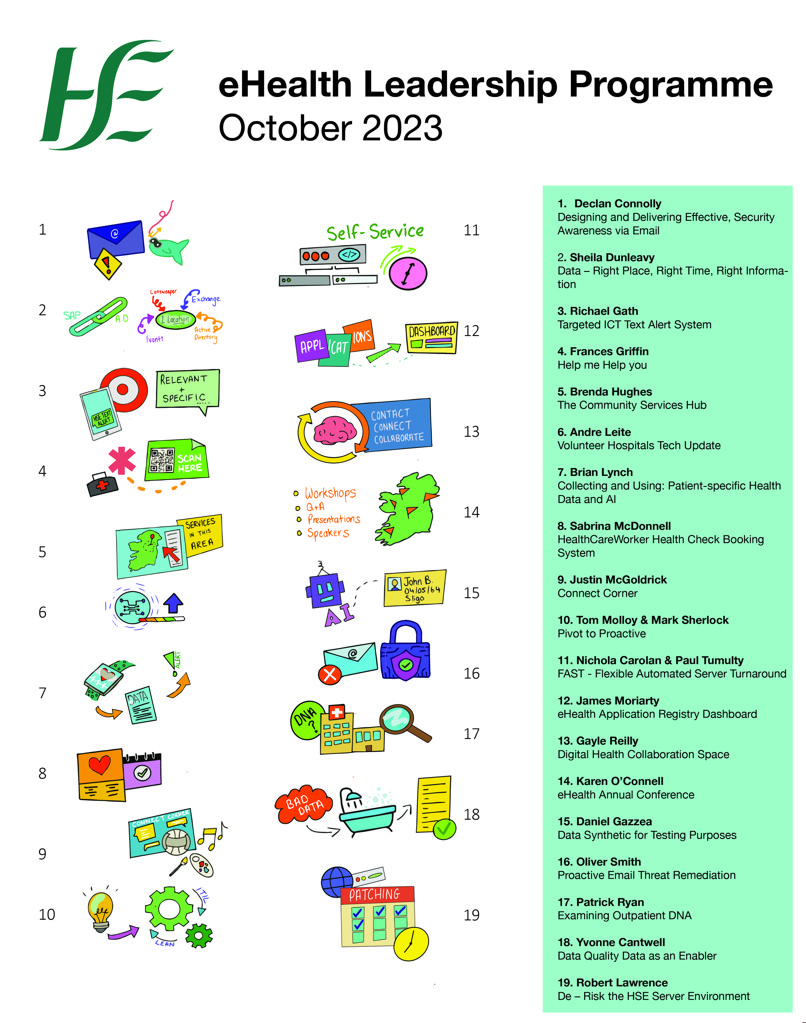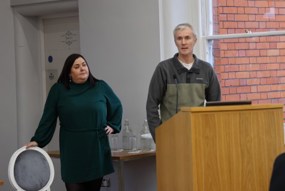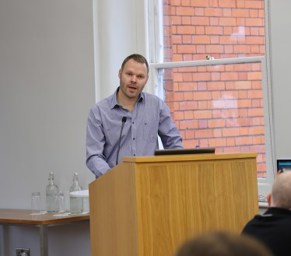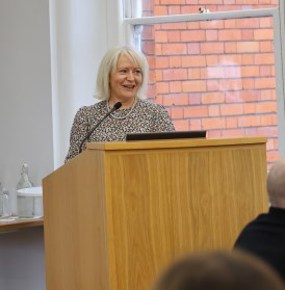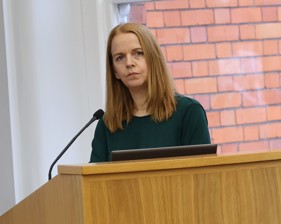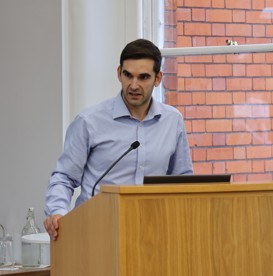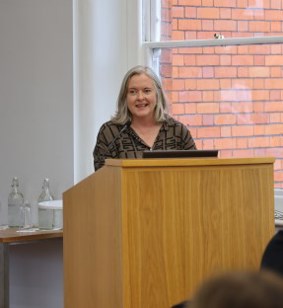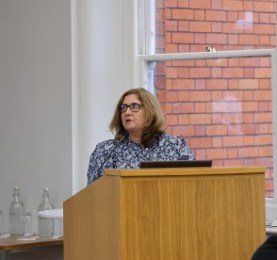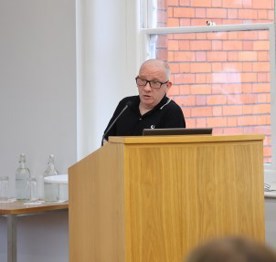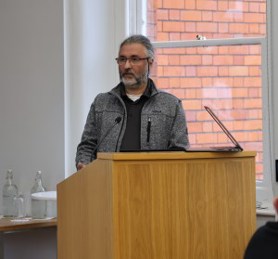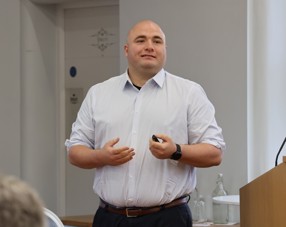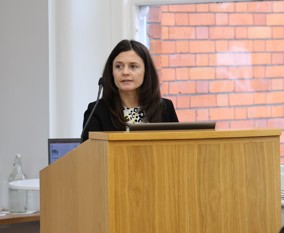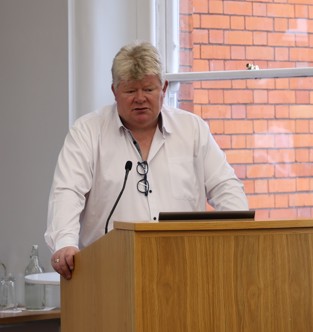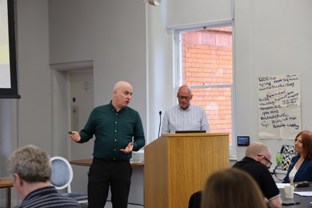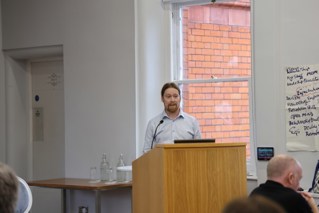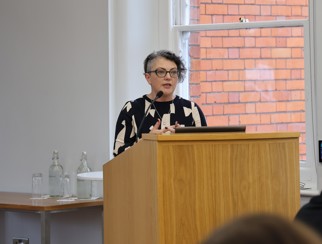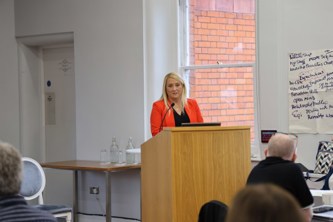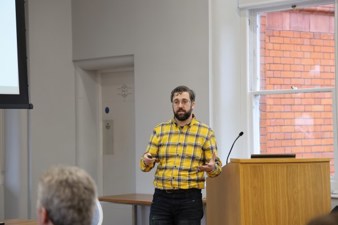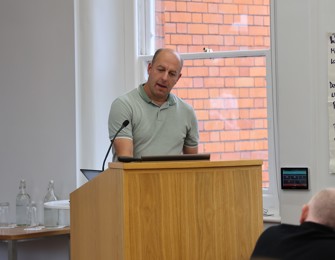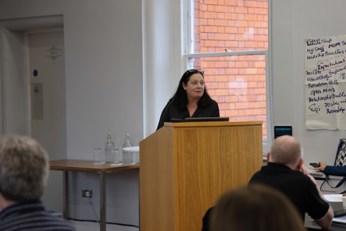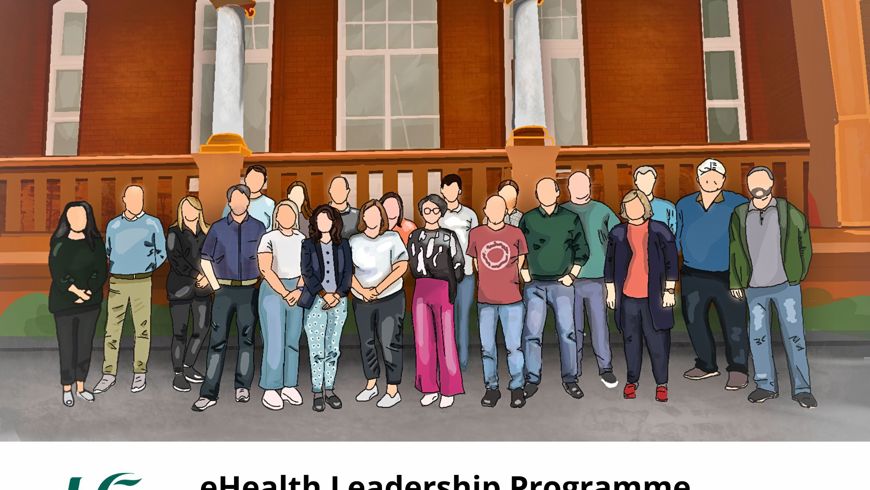
eHealth Leadership Programme October 2023
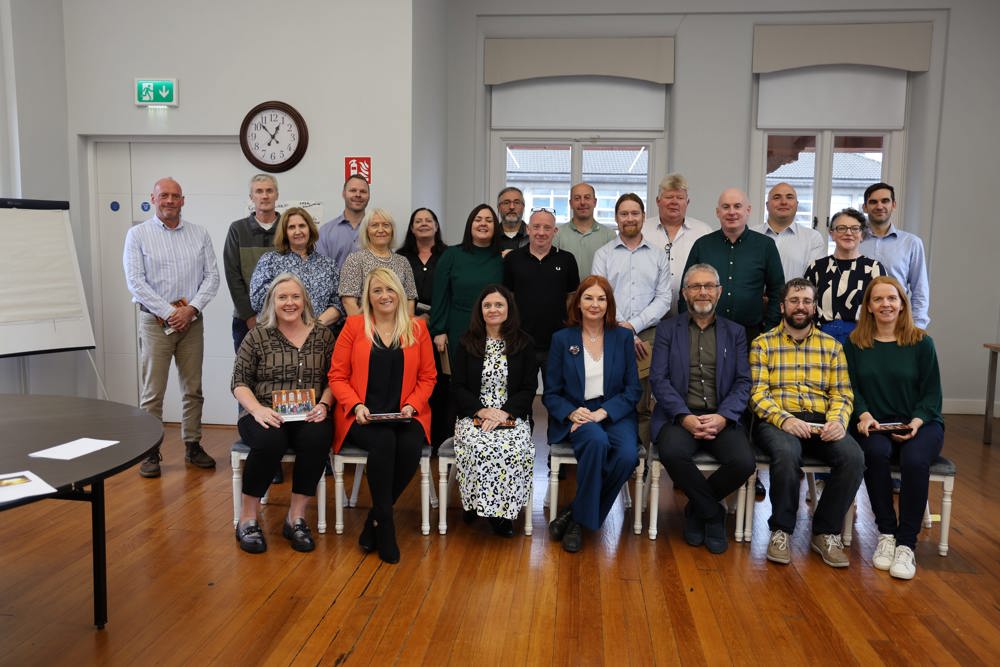
On Wednesday 18th of October we gathered at the Richmond Education and event centre in Dublin for our Leadership Development programme presentations. This event gave the twenty one participants the opportunity to use their new knowledge and skills acquired over the 6 month training programme to present a proposal to the senior management team of eHealth. We were very excited and impressed with all the brilliant ideas and innovations aiming to improve the everyday workings of eHealth for our HSE staff and patients.
FAST - Flexible Automated Server Turnaround
|
Nichola Carolan & Paul Tumulty Paul and Nicola’s proposal is to implement a standardised and consistent model for on premise hosting process that delivers best in class infrastructure in an efficient manner, ensuring involvement of the correct teams at the correct time in the process. |
|
Designing and Delivering Effective, Security Awareness via Email
|
Declan Connolly Declan’s pitch revolved around improving the organisation’s cyber security awareness, with particular emphasis on email use. Declan’s idea builds upon the post cyber-attack PwC report, which recommends delivering a multi-year cybersecurity transformation programme. Declan’s proposal can be achieved through 5 steps: expanding brand recognition, improved email design, security culture, additional messaging, and awareness of phishing. |
|
Data – Right Place, Right Time, Right Information
|
Sheilagh Dunleavey Sheila’s pitch was to collate the many data sources used within the HSE, such as SAP, Ivanti, Activive Directory, Lansweeper etc, to create one central data repository. This ‘Health Directory’ would act as a link between SAP and Active Directory, allowing users to easily access a complete, up to date and integrated staff profile. |
|
Targeted ICT Text Alert System
|
Richael Gath Richael proposed various improvements to the HSE Text Alert system. Some of Richael’s solutions include setting up a user list based on the applications the recipient uses, and expanding the number of staff who can receive text alerts (currently only 22% use HSE mobile phones) by introducing an option for non-HSE mobile users to register an alternative number. |
|
Data Synthetic for Testing Purposes
|
Daniel Gazzea Daniel proposed the use of AI generated synthetic data in the testing stage of application development. This creates a more realistic and scalable sample database that can be used to test and fix any bugs in the system prior to go-live. This model speeds up the testing process as synthetic data can be utilised while the DPIA (Data Protection Impact Assessment) is happening, instead of having to wait for the impact assessment to be complete before testing can begin. |
|
Help me Help you
|
Frances Griffin Frances' ‘Help Me Help You’ is an initiative that provides vital care information to first responders. In the event of an emergency, the First Responder can scan the ‘HSE Help Me Help You’ medical QR Code self-adhesive label that is stuck in a designated area, such as your driver’s license, fridge, phone case etc. The First Responder instantly has accesses to your crucial medical details to make informed decisions and provide the most appropriate care during an emergency, for example: if you are diabetic, allergic to penicillin, or have a hearing difficulty. |
|
The Community Services Hub
|
Brenda Hughes Breda pitched the ‘Community Services Hub’. This will consist of a central portal that will host information about various supports available to people in the Community from Voluntary, Community, Council and other Government Agencies. The portal will be designed to give access to information on services by area and will be available to all, ensuring everyone who needs these services can find them. |
|
De – Risk the HSE Server Environment
|
Robert Lawrence Robert proposed to implement Windows Operating System and SQL Software patching schedules across the entire HSE server estate. As it currently stands the HSE patches servers in an Ad-Hoc manner. Engaging with the scheduled process, this would fix vulnerabilities in software and applications that are susceptible to cyber-attacks, keep software up-to-date, and reduce the number of Critical Instances recorded. |
|
Volunteer Hospitals Tech Update
|
Andre Leite Andre proposed to update the tech infrastructure in our voluntary hospitals. Benefits of this modernisation of the infrastructure environment include improved governance, improved security, improved resilience and recoverability, cost reduction, life cycle management, and increase protection and availability of the patient data. |
|
Collecting and Using: Patient-specific Health Data and AI
|
Brian Lynch Brian explored innovative ways to better utilise existing health data obtained from tech wearables such as FitBit watches. Brian suggested the creation of a smartphone app to collect patient-specific health data, which is readily stored and securely exported. This app monitors the patient, and using AI could advise people to seek medical assistance if it picks up on concerning patterns. It would also provide the data to GPs, so doctors will be able to assess the patient at the first appointment. |
|
HCW (HealthCareWorker) Health Check Booking System
|
Sabrina McDonnell The basis of Sabrina’s pitch was workplace stress, and how burnout in the health service could potentially lead to physical ailments and medical errors. Sabrina proposed a confidential staff health check system using the existing myHealth Digital Platform, which aims to support health workers well-being reflecting management’s priority in valuing and protecting their staff. |
|
Connect Corner
|
Justin McGoldrick In response to the rapid increase of eHealth staff and the blended work environment, Justin presented his pitch ‘Connect Corner’. This is a digital platform for eHealth employees that allows staff to share common interests outside of the work environment i.e.; sporting interests, musical interests, drama, hobbies etc. Personal connection and good social engagement among colleagues fosters a positive work environment, which promotes productivity and staff retention. |
|
Pivot to Proactive
|
Tom Molloy & Mark Sherlock Tom Molloy and Mark Sherlock spoke about keeping the proactive momentum of the positive changes made as a direct result of eHealth’s responses to Covid and the cyber-attack. These service improvements included Telehealth solutions, NE & NW move from Lotus Notes to MS Exchange, accelerated adoption of single national domain (healthirl), and greater cyber resilience. Their proposal is to implement an eHealth CSI (Continual Service Improvement) model using existing resources (human and technical). Using the ITIL and Lean frameworks, Tom and Mark have proposed a process flow for CSI, in which shortlisted proposals will be submitted to SMT before implementation. |
|
eHealth Application Registry Dashboard
|
James Moriarty James proposed to build a dynamic Power BI dashboard based on eHealth Application Registry data to operationally manage the service and provide a strategic view of the eHealth Application Estate. Benefits of this include visual representation of all applications currently in use in the organisation, strategic planning for local and national applications and identification of KPI’s. |
|
‘More of This Sort of Thing’ – introducing an eHealth Annual Conference
|
|
Digital Health Collaboration Space
|
Gayle Reilly Gayle pitched a Digital Health Collaboration Space, which is a dedicated virtual space where people who share specific goals, interests, motivations and vision can connect. Different zones would be available within the application such as: Contact Management Solution; Connect Zone; Specialist Knowledge Sharing Space. This concept would be targeted as an open source forum where users could connect/collaborate with a wider audience, not just within their specialised area. It would also serve as a one source of truth platform that could bridge the gap between clinicians and IT Professionals. |
|
Examining Outpatient DNA
|
Patrick Ryan Patrick proposed to interrogate the IPM Outpatient DNA (did not attend) data with a particular focus on identifying who missed their appointments, and for what reason. In a two-step process, this data would be analysed to find patterns such as demographics or distance, and create an evidence base for future reasoning and predictions. This data would be provided to decision makers, change managers and outside stakeholders so that interventions could then be put in place to reduce DNA rates. |
|
Proactive Email Threat Remediation
|
Oliver Smith During Oliver’s pitch he highlighted that email is still the number one threat from a cyber security perspective. He proposed the introduction of software that could remove unwanted emails that have reached user inboxes and halt evolving cybersecurity incidents, automatically quarantine malicious emails that bypass perimeter solutions, and track forwarded messages to individuals or distribution groups among many other features. This would increase the HSE's cyber security and help prevent future attacks. |
|
Data Quality Data as an Enabler
|
Yvonne Cantwell Yvonne stressed the importance of standardised, accurate and consistent data quality, particularly in reference to IHI. She proposed the development of an application using software such as TX Patient to cleanse data that may not meet these standards. For example, names, date of birth and addresses. This ensures consistent quality and validation across datasets. |
|
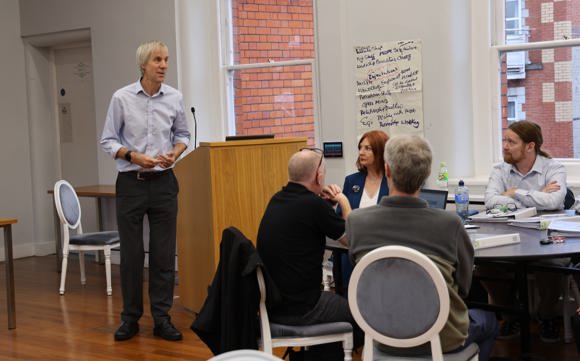 |
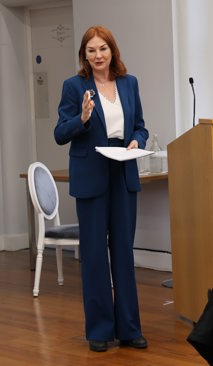 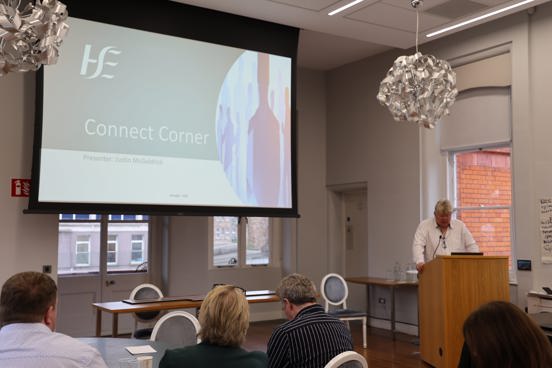 |
A visual representation of the day (below) was created by Kate Hanlon, eHealth Communications:
